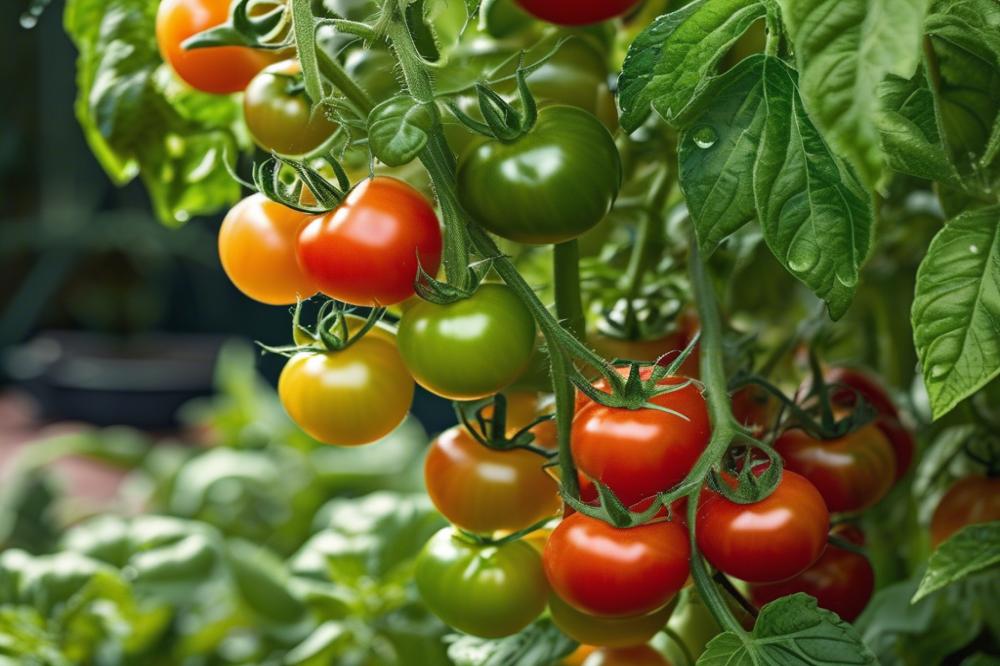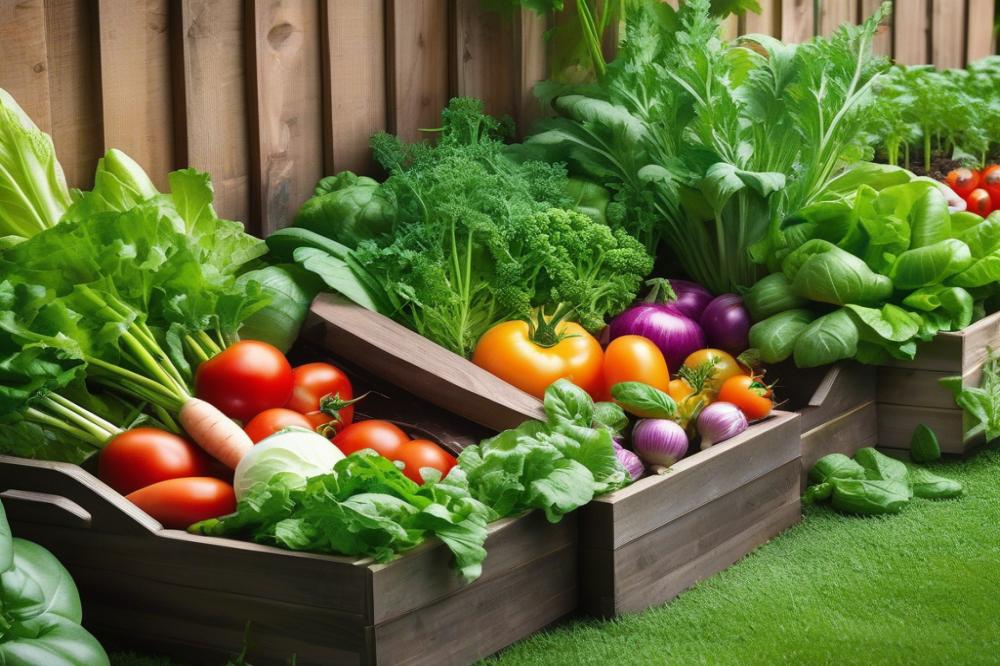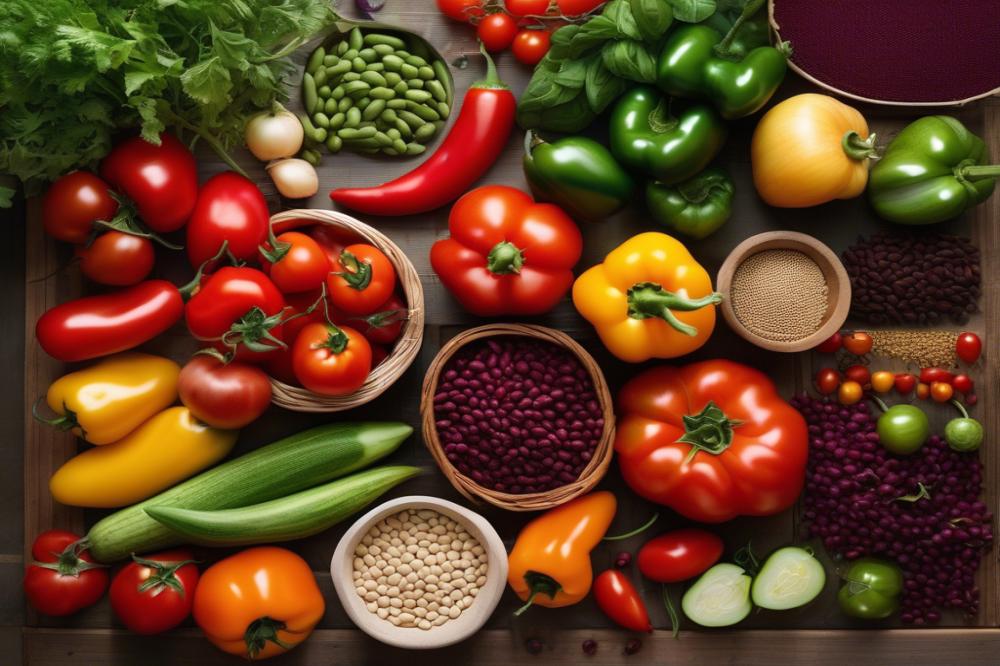The Key to growing tomatoes in high-humidity regions
growing tomatoes in high-humidity regions can be both exciting and challenging. The lush environment may promise vibrant plants, but managing moisture can become tricky. High humidity directly impacts tomato plant care, presenting unique problems for gardeners.
Understanding the subtleties of humidity management is crucial for anyone interested in cultivating healthy crops. It is not only about watering correctly, but also about creating an environment conducive to growth. When air is saturated with moisture, plants are more susceptible to issues like fungal diseases. These complications can lead to poor yields and affect the overall health of the plants.
Challenges posed by high humidity include ensuring proper soil drainage and finding effective watering techniques. Waterlogged roots can hamper growth and, in some cases, even kill plants. Moreover, controlling temperature within a greenhouse setting is essential. Optimal temperature levels help reduce the risk of diseases that thrive in wet conditions.
The choice of disease-resistant varieties can also make a significant difference. By selecting robust types, gardeners can mitigate some of the risks associated with excess moisture. Additionally, implementing good techniques like mulching can aid in reducing soil moisture loss while also suppressing weeds.
Pest management becomes even more vital in humid conditions. With moisture in the air, pests tend to flourish alongside the plants. Keeping a watchful eye for pests can help maintain the health and productivity of your tomatoes.
In conclusion, the secret to success lies in a well-rounded approach. By balancing humidity management, proper care, and consistent practices, gardening in high-humidity regions can lead to fruitful outcomes.
Humidity Management


High humidity can pose challenges for vegetable gardens, particularly for tomato plants. Managing moisture around these plants is crucial for their growth. Implementing humidity management techniques can significantly improve their health and yield.
Techniques to Manage Humidity in the Garden
Creating a balance in moisture levels starts with good practices. A well-drained soil regime is essential. Incorporating organic matter can enhance soil drainage. This prevents excess moisture, which can lead to rot. Utilize proper watering techniques as well. Watering in the early morning helps reduce humidity levels by allowing moisture to evaporate. Avoid overhead watering, as it can promote fungal diseases.
Importance of Air Circulation for tomato plants
Air circulation plays an important role in tomato plant care. Good airflow helps dry out excess moisture on leaves. This reduces the risk of developing diseases. Plants benefit from being spaced properly, which allows air to flow freely. Consider placing fans in growing areas to enhance circulation, especially in greenhouse gardening practices.
Optimization of Spacing Between Plants
Proper spacing is a fundamental principle of effective gardening. Overcrowded plants trap moisture and create a humid environment. Aim for at least 24–36 inches between each tomato plant. This helps each plant receive adequate airflow. It also allows for easy access to harvest and care for the plants. When selecting disease-resistant varieties, check their recommended spacing needs. Adjust your planting layout accordingly to optimize conditions.
Mulching around tomato plants can also be beneficial. A layer of mulch retains soil moisture while preventing water from splashing onto the leaves. Mulch can help keep plant bases dry—minimizing the chance of fungal issues. Being strategic about temperature control assists as well. Shade cloth can be employed on particularly hot days to reduce stress on your plants.
In summary, managing humidity involves a combination of techniques. From effective watering methods to ensuring proper spacing, every detail counts. Taking these steps can create a healthy environment. Growing tomatoes in humid areas doesn’t have to be daunting.
Tomato Plant Care


Caring for tomato plants in regions with high humidity requires attention and understanding. Healthy plants thrive with proper techniques and strategies. One critical aspect is soil drainage. Waterlogged soil can lead to root rot, which can devastate the roots and diminish growth.
To promote good soil drainage, select raised beds or well-draining containers. Additionally, incorporating organic matter into the soil can improve its structure and provide better aeration. A healthy root system will subsequently support robust plants that can withstand the challenges of humidity.
Watering techniques also play a crucial role. In humid climates, overwatering is a common mistake. Instead of watering daily, it’s wise to check the soil’s moisture level. A finger test can help; if the soil feels dry an inch below the surface, it’s time for some water. Watering at the base of the plant prevents fungal diseases, which thrive in moist conditions.
Utilizing disease-resistant varieties is highly recommended. These plants can better withstand common issues caused by excess moisture. Many gardeners choose specific breeds that are bred to resist diseases while still yielding delicious fruit.
Greenhouse gardening may also be beneficial in controlling temperature and humidity levels. This setup protects the plants from extreme weather fluctuations and pests. Consider using fans or ventilation systems inside greenhouses to regulate air circulation and reduce the risk of mold.
Mulching can also aid in humidity management. A layer of mulch keeps moisture levels stable while shielding the soil from extreme temperatures. It helps suppress weeds, which compete for nutrients and water. Regular inspections for pest management are important as well. Pests can spread diseases, especially in warmer weather.
Fungal Diseases


Fungal diseases are a significant concern for tomato growers, especially in regions with high humidity. This environment creates a perfect breeding ground for various fungal pathogens. Some of the most common issues include blight, wilt, and powdery mildew. These ailments can spread quickly, often leading to reduced yields and poor quality fruit.
Overview of Fungal Diseases that Affect Tomatoes
Blight is perhaps the most notorious disease, capable of wreaking havoc on a crop. It manifests through dark spots on leaves and can lead to rapid defoliation. Tomato wilt, on the other hand, leads to drooping plants and prevents nutrients from reaching the fruits. Powdery mildew appears as a white, powdery substance on leaves, hindering photosynthesis. Recognizing these symptoms early is crucial for effective intervention.
Strategies for Prevention and Management of Diseases
Prevention starts with good tomato plant care practices. Techniques like maintaining proper soil drainage can significantly reduce fungal infection risks. Watering techniques also play a vital role. Avoiding overhead watering helps keep the foliage dry. Additionally, practicing crop rotation can minimize the spread of pathogens. Using mulching can help control weeds and retain moisture, but it’s important to ensure that the material used does not harbor disease spores.
Temperature control can further aid in limiting disease spread. Keeping the growing environment as stable as possible discourages fungal development. Regular monitoring for the presence of pests is crucial, as they can act as vectors for fungal spores. Always gather fallen leaves and debris around the plants to limit potential sources of infection.
The Role of Disease-Resistant Varieties in High-Humidity Regions
Choosing disease-resistant varieties is an essential strategy for successful greenhouse gardening in humid climes. These plants are bred specifically to withstand certain diseases, reducing the risk of infection. Look for varieties that offer resistance to common fungal issues like blight and wilt. Such varieties can save a grower time, money, and effort while boosting overall productivity.
By selecting the right kinds of tomatoes, growers increase their chances of having a fruitful harvest. In high-humidity regions, ensuring that plants are resilient against fungal diseases is vital. This not only benefits the grower but also enhances the sustainability of tomato farming.
Greenhouse Gardening
Benefits of Greenhouse Gardening in Humid Climates
Greenhouses offer an excellent solution for growing plants in humid regions. They create a controlled environment that shields tomato plants from excessive moisture. This protection leads to healthier growth. Without that control, high humidity can invite fungal diseases like powdery mildew and blight. By limiting moisture on plant leaves, growers can drastically reduce the chance of these issues. Moreover, greenhouses extend the growing season. They allow cultivators to start plants earlier and harvest later. This is especially beneficial in areas with unpredictable weather.
How Greenhouses Can Help Control Temperature and Humidity
Temperature control is crucial in high humidity. Greenhouses help maintain warm air during cooler nights while cooling down during hot days. Ventilation systems play an important role in managing air circulation. Open vents can reduce heat buildup and humidity levels. This practice promotes strong tomato plant care. Moisture can also be managed by using dehumidifiers if necessary. When humidity rises too high, these tools help maintain balance. By adjusting the conditions, gardeners can provide a stable environment for their crops.
Tips for Maintaining Optimal Conditions in a Greenhouse
Successful greenhouse gardening requires constant attention. First, analyze your watering techniques carefully. Overwatering can quickly lead to problems. Instead, stick to a consistent schedule. Drainage is equally important to prevent waterlogged soil. Implement good soil drainage practices to keep roots healthy. Choose disease-resistant varieties to combat possible threats. Regular monitoring for pests will also aid in healthy growth. Another effective technique is mulching. This practice helps retain moisture while keeping weeds at bay. Always remember to check the temperature daily. A small change can impact plant health significantly. With diligent efforts, maintaining balance becomes easier.
Pest Management
Challenges of Pest Management in Humid Conditions
High humidity can create a haven for pests. Warm, moist air encourages insects like aphids and whiteflies to thrive. This environment also raises the risk of fungal diseases. Tomato plants facing such challenges may struggle to grow well. Excess moisture can weaken the plant’s defenses. Regular pest management becomes crucial in these situations. Without proper control, infestations can worsen rapidly. Maintaining optimal soil drainage is vital to diminish standing water. Techniques to manage humidity are essential for protecting crops from these threats.
Integrated Pest Management Strategies for Tomato Growers
Employing integrated pest management (IPM) is beneficial for tomato plant care. This approach combines different strategies for effective pest control. Monitoring the garden for signs of trouble is the first step. Farmers should look for bugs and damaged leaves regularly. When an issue arises, identifying the pest is key. Utilizing pest-resistant varieties can decrease the need for chemical treatments. Biological controls, such as beneficial insects, can also play a role. Ladybugs, for instance, feast on aphids. Techniques like mulching help maintain moisture levels while keeping pests at bay. Regular watering techniques need adjustments to avoid creating overly humid conditions.
Role of Certain Companion Plants in Pest Deterrence
Companion planting can deter pests naturally. Using plants like marigolds near tomato crops can repel unwanted visitors. These flowers emit scents that many insects find unappealing. Additionally, basil and garlic can protect against specific pests and diseases. These plants also improve the flavor of tomatoes and encourage healthy growth. Proper temperature control helps create an environment where companion plants thrive alongside tomatoes. Positioning them thoughtfully within the garden enhances overall pest management efforts. Always remember that some plants attract beneficial insects, further improving defenses.
Mulching and Soil Health
Importance of Mulching in High-Humidity Regions
Mulching plays a vital role in maintaining the health of tomato plants, especially in areas with high humidity. This process not only conserves moisture but also aids in controlling rising temperatures in the soil. A good layer of mulch can hinder weed growth, preventing competition for nutrients. Weeds often harbor pests and diseases, making their removal crucial for effective pest management. By creating a barrier, mulch can also help reduce the risk of fungal diseases that thrive in moist conditions.
Benefits of Maintaining Soil Health and Moisture Retention
Healthy soil significantly contributes to the overall success of tomato plant care. Maintaining soil health leads to improved drainage, which is essential in humid climates. Proper drainage decreases the chances of waterlogging, a condition that can cause root rot and other ailments. Retaining moisture through mulching ensures that plants receive the right amount of water without the need for constant watering techniques. Additionally, rich soil provides essential nutrients, which support vegetable growth and longevity.
Types of Mulch Suitable for Tomato Plants
Different types of mulch can be used effectively for tomatoes. Organic materials, like straw or grass clippings, decompose over time, enriching the soil as they break down. These materials are excellent for moisture retention while adding nutrients back into the ground. On the other hand, wood chips provide a longer-lasting option that also helps with temperature control. Other choices include synthetic options like black plastic, which can effectively suppress weeds while warming the soil. Each type serves a purpose, so consider what best fits your garden’s needs while practicing greenhouse gardening or outdoor growing.
Disease-resistant varieties can also thrive better when protected by an appropriate mulch layer. Selecting the right mulch helps set the foundations for healthy growth, aiding in overall humidity management throughout the growing season.
Temperature Control
Managing temperature fluctuations in humid environments
In high-humidity regions, temperature can swing dramatically between day and night. Daytime heat often reaches uncomfortable levels, while nights may be cooler. These fluctuations can stress your plants if not managed properly. Consistent temperatures are essential for optimal growth. High heat combined with humidity can create a breeding ground for fungal diseases. This is particularly true for tomatoes, as they thrive in stable conditions.
Managing these variations starts with proper planning. Greenhouse gardening offers a controlled space where temperature can be moderated. Another method involves selecting locations that facilitate good airflow. Planting in areas with shade during the hottest part of the day can help. Also, covering plants during unexpected cold snaps protects them from sudden drops in temperature. Taking these precautions can lead to healthier plants and a better harvest.
Effects of temperature control on tomato growth and yield
Temperature has direct effects on the growth rate of your plants. High temperatures can lead to blossom drop, resulting in fewer fruits. Conversely, cooler temperatures may slow down the growth process considerably. Both extremes should be avoided to achieve the best yield. Ensuring plants receive just the right amount of warmth promotes flowering and fruit formation.
With effective temperature control practices in place, plants can exhibit vigorous growth. Maintaining a balance between heat and moisture encourages strong root development. Healthy foliage also becomes more resilient against pests and diseases. A focus on temperature can drastically change your outcomes. Successful control of temperatures not only boosts productivity but also enhances the overall quality of the tomatoes.
Techniques for moderating temperature in the garden
Several techniques exist to control temperature effectively in your garden. Mulching is one method that helps regulate soil temperature. Organic materials like straw or grass clippings can offer great benefits. These materials retain moisture, keeping the soil cool during hot spells.
Similarly, monitoring your watering techniques can assist in temperature regulation. Watering early in the morning or later in the day helps avoid overheating. Overhead watering right when the sun is at its peak should be avoided. Also, consider using shade cloths above your plants to shield them from harsh sun.
For those looking to go a step further, consider disease-resistant varieties. These plants almost naturally require less care as they are better suited to withstand temperature extremes. Soil drainage is another important factor. Good drainage prevents excess moisture accumulation, alleviating stress on the plants during humid conditions. Each of these techniques contributes to better tomato plant care, ensuring a successful growing season.
Final Thoughts on Successful Tomato Gardening
Recapping the essential strategies for cultivating tomatoes in humid environments is important. Focus on humidity management to protect your plants from disease. Choose resistant varieties that thrive in heavy moisture. Implement proper spacing to increase air circulation. Regular pruning helps prevent fungal issues by allowing more light and airflow. Mulching retains soil moisture while preventing weeds from taking over. Consistent and light watering contributes to a balanced environment for your crops.
Adopting these best practices is vital for a healthy harvest. With patience and care, you can transform any garden into a vibrant tomato patch. Remember that attention to tomato plant care can lead to rewarding outcomes. Seasonal changes may bring challenges, but staying informed and adaptable will prepare you for success.
Embrace the process of growing tomatoes and appreciate the fruits of your labor. The enjoyment of fresh, homegrown tomatoes is worth every effort you put in. With each bite straight from your garden, you will taste the rewards of your hard work. Happy gardening!



